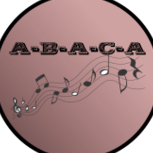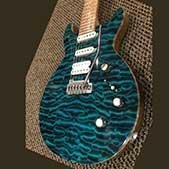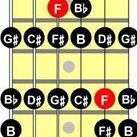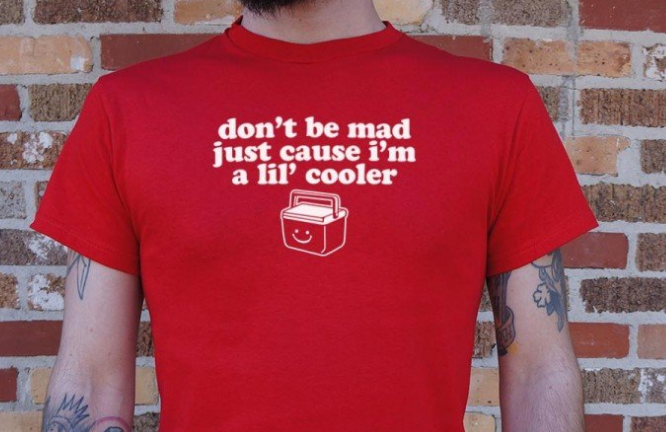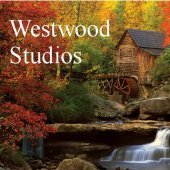Leaderboard
Popular Content
Showing content with the highest reputation on 01/25/2022 in all areas
-
There's a guy who's in the process of building a website that will scrape some of the deal information off of the main music websites and assemble the deals in one place. It's sortable: by company, category, subcategory and discount. You can also click the words "grid list" at the top and see a different way of displaying the data. This is not the kind of thing that could ever put a dent in what Larry does. To start with, he's not looking to track everything. And secondly, the computer bot scraping the web doesn't know what it's scraping, so there may be ridiculous results unless it is moderated. But if it works, it will be a useful supplement to Larry, and a big competition for people who only list the main stuff. The cool thing about it --assuming it will work--is that it will track the history of music software deals. After a few years, it could be very useful https://musicsoftwaredeals.com/ Don't get hung up on whether it works perfectly or not. It seems like he just started putting it together recently and it currently is a work-in-progress to show how it may work. Although some of it already does work. He started a post in VI:Control to get suggestions from people about what they would like in a site like this. https://vi-control.net/community/threads/im-building-an-automated-platform-that-lists-all-music-software-deals-in-one-place-with-price-history.119796/ What do you think? If you have suggestions about it, now is the time to go to VI:Control and chime in.8 points
-
8 points
-
Get it here. From January 25th to January 31st, 2022 https://www.softube.com/dirty-tape7 points
-
7 points
-
5 points
-
Really, the question of text etiquette is more important than the matter of Steinberg pulling VST2 support from their DAW's, unless they're Cubase users. It will affect nobody else. Other DAW manufacturers have no reason whatsoever to discontinue support for the VST2 format. Actually, the announcement gives them a competitive advantage over Cubase and Nuendo, and they don't even have to write any new code. It takes a long, long time for plug-in formats to fade away, unless a company forces the issue on their users. There are DAW's and NLE's out there other than Cakewalk that still support DX. All of Vegas Pro's audio FX are still in that format. Some audio hosts have yet to support VST3. If I were a Cubase user, I would be royally urinated; my iLok is full of plug-ins that only come in VST2 format, such as Exponential Phoenix, R2, R4 and Nimbus, and all of my AIR synths. These are my most-used go-to FX and instruments, used on every single project, and in both cases, I'm pretty sure there are never going to be VST3 versions of them, because the developers have long since frozen their code. About half of Glitchmachines' product line is VST2-only. Even if I were at all interested in Cubase, this announcement puts it entirely off the table for me. Who wants to do projects in a DAW where the next major update will make all of their existing projects obsolete? It's a minus for Steinberg and their user base. For everyone else, it's a snooze.5 points
-
Exactly. Refusing to use accepted conventions of communication displays a lack of respect for the reader. If you don't believe me, watch what happens when you correct them.4 points
-
3 points
-
why not just pay Larry for all the amazing work he does ? if it ain't broke etc.3 points
-
Have not tried it out yet. I'm a ToonTrack hoarder (i.e. I own everything for the 'just in case' event).3 points
-
I think that I prefer the drum sound in the video in bypass mode.3 points
-
Valid until January 31th, so plenty of time. Can’t complain for free stuff…3 points
-
You know what's really sad? People spend far too much time trying to establish their own intellectual superiority, rather than actually trying to understand what it is that people are saying, and why! "YOU, peasant, do not speak thusly as I, therefore I cannot abide" This is a forum, not a Literature Class...and expecting people to use literary conventions that most Rhode Scholars would have a hard time following, in typing out their random thoughts, on the Internet, usually hurriedly, is the epitome of condescension and virtue signaling!3 points
-
Caps don't offend me so much as they further reduce the already challenging task of inflecting tone and context when communicating via text. Capitals and lowercase exist for a reason. It helps us to identify proper nouns, acronyms and other sight cues. It's not the end of the world if someone types in CAPS, but it often goes along with personality traits that could be a red flag. Obviously this is not always true. I do tend to ignore most posts in all caps because in my experience there is little fruitful discussion to be had with people insistent on typing that way.3 points
-
3 points
-
True story this... For several years, I worked with a young woman (mid-20s?) whose first name was Emma and who always signed her name in lower case in emails (everything else was properly capitalised). So we could legitimately call her...Lower Case Em.3 points
-
SampleScience has released a new VST plugin (also available as a sound library in multiple formats) called Abstract Crystal Pads, and it’s completely FREE! Abstract Crystal Pads is a collection of thirty abstract pads. It’s perfect for video projects and ambient music. SampleScience has released it in several different versions: Abstract Crystal Pads is a collection of thirty abstract pads. It’s perfect for video projects and ambient music. SampleScience has released it in several different versions: Plugin Version Decent Sampler Version Reason ReFill Version Kontakt Full 5/6 Version https://samplescience.gumroad.com/l/abstractcrystalpads2 points
-
We've released an update to all our plugins with bug fixes and optimisations. Click the images below to download the latest installer. Release notes per plugin here https://masteringthemix.zendesk.com/hc/en-gb/sections/360003181597-Release-Notes Windows Installer https://masteringthemix.us9.list-manage.com/track/click?u=c53f967373f0d2ca45fc19000&id=f775d8be59&e=47fb32d8f9 Mac Installer https://masteringthemix.us9.list-manage.com/track/click?u=c53f967373f0d2ca45fc19000&id=22a283392a&e=47fb32d8f92 points
-
@PavlovsCat @Esteban Villanova @abacab Now here are some nice "lo-fi" drums... https://sneakylittledevil.com/track/2357170/in-out-of-time-hd-96k2 points
-
You Don't Know Jack Schitt? Many people are at a loss for a response when someone says, "You don't know Jack Schitt." Now you can intellectually handle the situation. Jack is the only son of Awe Schitt and O. Schitt. Awe Schitt, the fertilizer magnate, married O. Schitt, a partner of Kneedeep &. Schitt Inc. In turn, Jack Schitt married Noe Schitt, and the deeply religious couple produced 6 children: Holie Schitt, Fulla Schitt, Giva Schitt, Bull Schitt, and the twins: Deep Schitt and Dip Schitt. Against her parents' objections, Deep Schitt married Dumb Schitt, a high school drop out. After being married 15 years, Jack and Noe Schitt divorced. Noe Schitt later married Mr.Sherlock, and because her kids were living with them she wanted to keep her previous name. She was known as Noe Schitt-Sherlock. Dip Schitt married Loda Schitt and they produced a nervous son, Chicken Schitt. Fulla Schitt and Giva Schitt were inseparable throughout childhood and subsequently married the Happens brothers in a dual ceremony. The wedding announcement in the newspaper announced the Schitt-Happens wedding. The Schitt-Happens children were Dawg, Byrd, and Hoarse. Bull Schitt, the prodigal son, left home to tour the world. He recently returned from Italy with his new bride, Piza Schitt. So now if someone says, "You don't know Jack Schitt", you can correct them. Not only do you know Jack, you know his whole family!2 points
-
Thanks for posting about the site! Its obviously very early in the progress stage right now but I hope to make a lot of progress over the next 4-6 weeks2 points
-
2 points
-
2 points
-
Same here though the page finally did load. Now I'm awaiting the login page. s.......l.........o.......w! While ya wait - here's a nice write-up from Bedroom Producers Blog Not sure it's worth the wait but I just opened the link in another tab and let it do it's thing while I browsed.2 points
-
2 points
-
I think that a lot of this is also because Cakewalk is free. You used to be able to read tutorials and other interesting items in the main magazines.. now its not even mentioned. Why is that when a product is for free and in some cases rivals those out there. I've been a cake walk user for nearly two decades and I can remember when it was one of the really big names. I even have the Sonar V Studio system which was a lot of money quite a while ago.2 points
-
2B Played Music has updated 2B Shaped Filter to v1.6 The update can be obtained via your 2B Played Music account or via the download link from the original order email, if you have already purchased the product. 2B Shaped Filter v1.6 Changelog: -DAW Compatibility fixes. -Standard knob value fix. -Reset knob value fix. -New about screen. https://2bplayed.com/product/2b-shaped-filter-edition/2 points
-
Bovine Excrement and a false dichotomy. Nobody is asking for or expecting a Doctoral dissertation. Just something comprehensible. Paragraphing. Capitalization. Punctuation. Proper English is not hard. It is not anything escoteric. > 99% of the posts here are proper English. You have this exactly 180° backwards. If one wishes to be understood, one should adhere to the conventions of communication and not expect one's intended audience to engage in mental gymnastics. Striving for clear communication is just common courtesy.2 points
-
If you have two keyboards, then what you might want to do is set one to channel 1 and the other to channel 2 Then in Cakewalk, when you set up a MIDI track for a given keyboard, make sure you set It's MIDI channel appropriately rather than Omni. Any MIDI track set to Onmi will respond to events regardless of the channel. (as long as the MIDI track’s local on is enabled)2 points
-
The rules weren't made - they emerged from the underlying social norms applying themselves to the new medium, and reflect the consensus. If you think differently and don't conform, people will perceive you as being impolite, awkward and/or aloof, and be annoyed with how you present yourself. It can't be that alien of a concept to anyone cultured enough to be blending in in civilized society where conforming to surrounding culture and abiding by social contracts is crucial for getting along and going forward. People are much better at reading the context than you (seem to) think. Generally they can tell whether using caps signifies agitation or emphasis. The problem with adding emphasis to every other word is that you lose the effect from overuse and end up sounding agitated. For instance, you emphasized "caps" by capitalizing it a total of four times and "yelling" twice, and in four out of six instances it was totally pointless. You also used quotes to put emphasis on "emphasis" the second time, even though no emphasis is needed and the quotes are completely out of place. You also quoted and capitalized "bold" and "italics", effectively adding awkward double-emphasis (I know it wasn't the intention, but by then you'd already set up the context for this interpretation), and you also randomly capitalized "yelling" once. I'm not even nitpicking, it is just tedious to parse. When there's so much irregularity jumping out from the text, I feel the temptation to skim it from start to finish by jumping from emphasis to emphasis instead of reading it thoughtfully, and in the end it indeed gives the impression of agitation, because I've never met one person whose words were so drenched in wisdom that their delivery would require so much emphasis. I wish I could say I've never met one person who would be so stupid that the emphasis was actually necessary, but that's not quite true. They're not here though.2 points
-
2 points
-
This update is a *huge* disappointment! The three main problems with this platform are, as others have noted, 1) the need to go online to render voices, 2) voice realism, and 3) usability (my biggest gripe). But instead of addressing these issues they wasted time introducing a vocoded-voice which can easily be created with many widely available, lost-cost, 3rd-party FX plugins. Why?!? Meanwhile the editor is still absolutely primitive compared to that of Synthesizer V. Emvoice lacks such basic functionality as full-screen zooming and note identification so you're constantly zooming in/out when editing. I find it's easier to just edit the MIDI data in my DAW and then read it back into Emvoice. They should have spent time adding features like the ability to read in text-files containing your lyrics and basic editor functionality such as scaling note-length independently of neighboring notes. As it stands now, if two notes are connected, you cannot break them apart and shorten one; you can only adjust the shared onset/offset time. So instead you have to delete one of the notes, add a new above/below the other note, make the new note short enough to prevent it from getting reconnected to the existing one, and then drag it down/up to the correct note value (which involves counting notes [C#, D, D#, E,...] while dragging the new note b/c the paino roll keys are not labeled). Needless to say I don't bother with all this hassle so I just do that editing in my DAW as well. And so you're constantly jumping back-and-forth between Emvoice and your DAW to get things right. It's a *real* drag. The plugin also periodically crashes my DAW (Cubase 11 / Windows 10) which makes the experience even more frustrating, time-consuming, and inspiration-killing. And don't even get me started on the timbre of Jay's and Lucy's voices; neither is usable in most genres. Even at $59 I will *not* buy another voice. I've lost faith in this developer. Time to switch to Synthesizer V...2 points
-
Up at the top of the topic, there's a button for "follow." If you follow a topic, you'll get notifications whenever someone replies. This. iZotope's stuff is great, but it's like a self-driving car: you still need to know your destination. :-) Here's my brain dump on masking and highpassing. At this point in my mix engineering learning, I know how to prevent a lot of buildups and collisions before they occur, but what I do to check to see if something's being masked, or colliding or whatever, is close my eyes and listen closely. Most of the time, if an instrument is supposed to be a featured part of the mix, you should be able to hear it clearly, as an individual element. The exception is where you want something like a pad or texture to provide an atmosphere. Something that The Beatles did in their post-Rubber Soul studio career, and Brian Wilson, Phil Spector. The idea is that every instrument should have its own sonic space. There are multiple ways to accomplish that, the first thing to do is "carve," which means that you use EQ to notch or highpass out the overlapping frequencies from one instrument to reveal the other(s). This happens with instruments whose ranges overlap. Bass guitar and kick drum is where everyone starts. You have to choose which one is going to take the very bottom, and then highpass the other one. Sidechaining, where the signal from the kick ducks the bass, is popular, especially in EDM. Wavesfactory makes what is probably the best single plug-in for eliminating masking, Trackspacer. It works via sidechaining. Wait for it to go on sale for about $40 and pounce. I think iZotope Neutron has facilities for doing this, but I had Trackspacer before I got Neutron, so I haven't spent much time checking it out. The next tip is highpassing. Most full-range instruments like guitar, keyboards and voice have information in the low end that is unnecessary in a full mix. Listen to The Beatles' acoustic guitars, and Tom Petty and the Heartbreakers'. Martin and Emerick highpassed The Beatles guitars and vocals like crazy. All you get is the top end, which with strummed acoustic guitar is all you want to hear in a full mix. Same with organ and piano (solo or sparse mixes are another story). My go-to for highpassing is the ProChannel Quadcurve EQ, but most EQ's have high and low pass filters. I would choose one with a graphical display like the Quadcurve, or iZotope's most excellent EQ. I'll highpass a vocal up to 400 or 500Hz or higher. Same with rhythm guitar. Highpassing has a magic counterintuitive (at first) effect, which is that you'll start to hear more bass, due to letting one instrument have that sonic space. Another technique that's essential to know, and I'm sure the iZotope AI knows how to do it, is finding and cutting the "honk" or "bark" frequencies of sounds. These are nasal or tubby or shrill frequencies that can make a sound poke out in a mix rather than having its own space. Most of the time it's good to do this, but not all the time, sometimes, those frequencies help the sound stand out in a good way. It can also be counterintuitive: cutting the loudest frequency allows you to push the sound's level higher in the mix, so it ends up becoming more audible. This is the main bread-and-butter use of compression on individual sounds. They don't poke out, so you can crank them. Lastly, and this is next-level stuff, you can create sonic space with panning and use of mid/side techniques. If you have rhythm guitar and organ, pan them apart from each other. I'm really into mid-side EQ and compression. It sounds more complicated than it is, basically it just means the processing gets applied to either sounds common to both Left and Right, the mono component, or it gets applied to the sound that spread outside the center, the stereo component. So think of a big keyboard pad, a lush stereo sound. You can give it its own sonic space by compressing or attenuating the middle and letting the sides come through. That way, other instruments that are center panned have that physical space to themselves. A lot of the time, synth sounds stack up at the sides, because big, wide pads sound great by themselves. But unless the pad is a featured sound, it doesn't need to take up the entire panorama to do its job. Mid-side EQ works the same way, you can cut the highs in the center and let them come through on the side, or whatever. If you get into this, you should check your mix in mono before putting it out there. Boz' freeware Panipulator is my tool of choice for that. Close listening to well-mixed material will give you a better idea of these concepts. One of the best acts ever for having mixes that give each instrument its own space is Steely Dan. Throw Aja on your studio monitors or good cans, listen to "Peg" or the title track, and you'll hear every note from every instrument. Also an iconic singer who once hated his own voice to the point that on their first album, there are 3 different lead vocalists. They even let the drummer sing one, so we know how desperate they were. All this is more what you can do, rather than precisely how, but maybe it will help you make better use of the iZotope software. Even with great AI, it's important to understand what the goals of applying it are. And maybe someday you'll be able to outdo the iZotope AI. After all, it doesn't know exactly what you're going for. It was a triumphant moment for me when I could outdo the Mastering Assistant in Ozone Elements.2 points
-
2 points
-
CAPS, when typing, is commonly believed to be the same as "yelling". However, some use it for EMPHASIS, and not yelling. But this creates confusion because the person typing believes that they are using CAPS for added emphasis, but the person reading interprets that as "Yelling" and "Anger". Fakebook is a good example of this. They don't allow "Bold" or "Italics" so, if one wants to add "emphasis" then you have no choice but to use CAPS. Then others believe you are YELLING because of the "stigma" of CAPS being most often referred to as being the equivalent of YELLING. Who made these rules?1 point
-
I wouldn't change either. But in my humble opinion I think it's good to know what our Daw fails, and also for developers to be able to fix this kind of thing that makes the product go from good to Excellent. ?1 point
-
1 point
-
IF they combine ALL 5 of the Fusion plugins into 1 and charge $149 then I'm interested.1 point
-
My full name, apparently, is actually "Craig B (ITHRN)" so completely different! It makes sense as long as you don't think about it. ?1 point
-
I think he lived in Misery too. (Sorry, I spelled Missouri wrong. Or did I?)1 point
-
Nope. Not related. My last name is spelled with a _ and a . On the other hand maybe his part of the family dropped the _ and . to disassociate from the smarter better looking line of the family. Totally plausible.1 point
-
♩ you will find that this will be mine♫ when this plugin sells for $19.99 ♩ It may be top notch, it may really be great but at $149 I think I can wait ♫1 point
-
1 point
-
Wow I never realized that. Thanks Steve! Don't know what we would do without U sir ?1 point
-
What !! Great message sent with very powerful vocal work .. soo right up my street 10/10 Ace Steve1 point
-
1 point
-
1 point
-
It's a company/unit license so if they had one for version 2 of their plugin, they should be covered for version 3, etc. I would also think a company could hire/subcontract a company with a license to subcontract the publishing, maybe. But that kind of legal jumping is way over my pay grade. Not clear if you can pass the license on (if a company is bought/etc). Would have to read the fine print. The license was free though (which is how free plugins can be made) but since it is not open source you can't really do "true" open source VST plugins or even mix GPL code with VST code. I'm sure I've seen a few open source apps that didn't support VST because of the license mess. And there is a lot of gray area stuff, that may or may not live up to the license. You end up with things like "This is open source, except for this small part of it, which is licensed differently." No clue if that kind of thing is really legal. You see this kind of legal gymnastics in Wordpress plugins too. And of course they no longer make the SDK and development files available anymore and there is no support. Which just makes things harder. They really are trying pretty hard to kill VST2.1 point





.thumb.jpg.63aa79fb78686ec147869308cb534c66.jpg)


